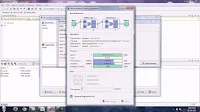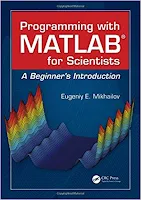Introductory Quantum Mechanics with MATLAB
James R. Chelikowsky ... 224 pages - Publisher: Wiley-VCH; (August, 2018) ... Language: English - AmazonSIN: B07GWWQP2H.
Presents a unique approach to grasping the concepts of quantum theory with a focus on atoms, clusters, and crystals. Quantum theory of atoms and molecules is vitally important in molecular physics, materials science, nanoscience, solid state physics and many related fields. Introductory Quantum Mechanics with MATLAB is designed to be an accessible guide to quantum theory and its applications. The textbook uses the popular MATLAB programming language for the analytical and numerical solution of quantum mechanical problems, with a particular focus on clusters and assemblies of atoms. The textbook is written by a noted researcher and expert on the topic who introduces density functional theory, variational calculus and other practice-proven methods for the solution of quantum-mechanical problems. This important guide: - Presents the material in a didactical manner to help students grasp the concepts and applications of quantum theory. - Covers a wealth of cutting-edge topics such as clusters, nanocrystals, transitions and organic molecules. - Offers MATLAB codes to solve real-life quantum mechanical problems. Written for master's and PhD students in physics, chemistry, material science, and engineering sciences, Introductory Quantum Mechanics with MATLAB contains an accessible approach to understanding the concepts of quantum theory applied to atoms, clusters, and crystals.



















